Stormwater management
What is stormwater
Stormwater is the water from rainstorms or melting snow that goes into the storm drains in the road through an underground pipe system to our rivers.
Stormwater from snowmelt and rain enters into the Bow and Elbow rivers without going through a treatment plant so we need to ensure the water draining into it is clean.
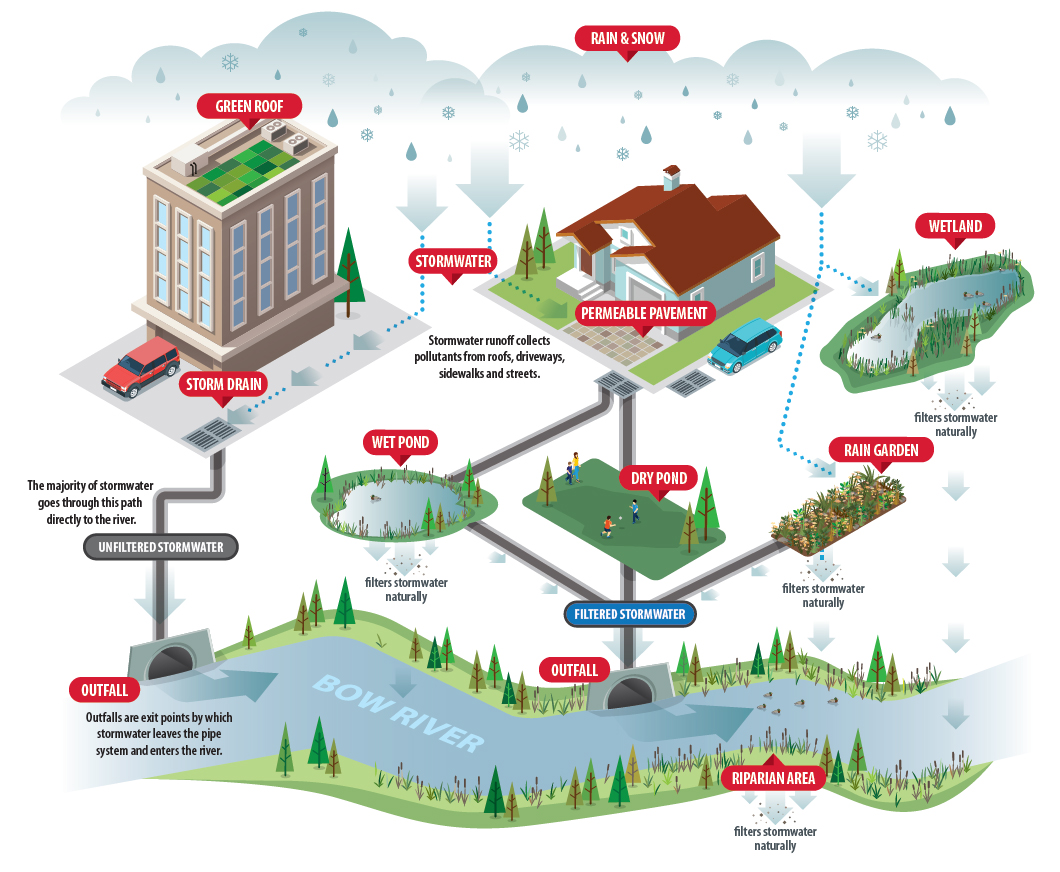
Click image for a full-size version
How you can protect our stormwater system
Dirt, oil, gasoline, garbage, animal droppings and chemicals such as fertilizers and pesticides are washed into storm drains which are connected to the underground pipe system.
This can affect the health of our streams, rivers and the land surrounding them, as well as the health of the wildlife and fish that rely on them, so we need to ensure the water draining into it is clean.
Here's how you can do your part:
-
Point downspouts toward lawns and gardens
Point downspouts toward lawns and gardens
-
Use a rain barrel with your downspouts
-
Wash your vehicle at a car wash
-
Sweep up debris from your garage and driveway instead of washing it away
-
Pick up after your pet at home and elsewhere
-
Never pour anything down the storm drain
-
Limit the use of fertilizers and pesticides
Our stormwater management system today
How we manage rain and runoff
Our stormwater management system reduces the impact of flooding, pollution and stream erosion.
The practices below improve the quality and decrease the volume of stormwater entering our waterways.
Storm drains
Managing stormwater reduces the impact of flooding, ensures public safety, reduces damage to property and helps keep our rivers healthy.
When rainfall and snowmelt runs off hard surfaces like roads, parking lots and buildings, stormwater reaches waterways faster, in greater volumes and with more pollution.
As our city has grown to over 1.3 million people on a land area of over 850 square kilometers, we are working to reduce the pollution entering our rivers from storms and runoff.
Storm drains (or catch basins) are the main way stormwater gets into the underground pipe system.
There are about 60,000 storm drains in Calgary which drain water off sidewalks, streets and roads.
The metal grates that can be seen at the edge of the road are only a portion of the catch basin structure.
Under the sidewalk is a barrel that collects water. The barrel is attached to a pipe that allows the water to be whisked away, eventually into our rivers.
These pipes start out small and get larger the closer you are to the river. They direct stormwater to the river by the way of gravity.
For issues with your storm drain, visit Storm Drains in Calgary.
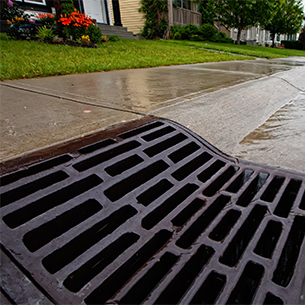
Wet and dry ponds
A dry pond is dry over 98 per cent of the time and can have playing fields in it.
Dry ponds fill with water very quickly in heavy downpours and can take as long as 24 hours to drain once the rain stops. Dry ponds are connected to stormwater infrastructure.
Wet ponds and constructed stormwater wetlands capture and contain stormwater – for a while. Wet ponds slow down water long enough to settle out some of the sediments and pollutants, helping return cleaner water to our rivers and streams through the stormwater system.
They are a critical piece of infrastructure that also help protect downstream communities from flooding. There are over 350 wet ponds throughout the city.
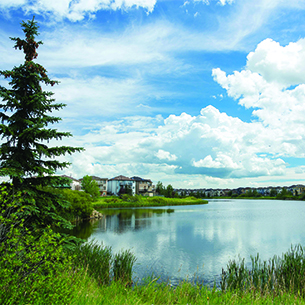
Low impact development
Rain gardens, green roofs and permeable pavements are landscaping and design practices that work with nature to manage stormwater runoff where it falls.
They slow water down, spread it out and allow it to soak in.
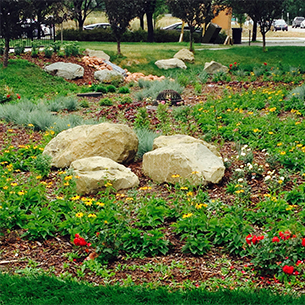
Wetlands
A wetland is an area of land that is saturated with water either permanently or seasonally. It contains plants and the water is quite shallow before a storm.
Natural wetlands are not directly connected to Calgary’s stormwater system.
Constructed stormwater wetlands are closely related to wet ponds but are more shallow and tend to have more vegetation cover.
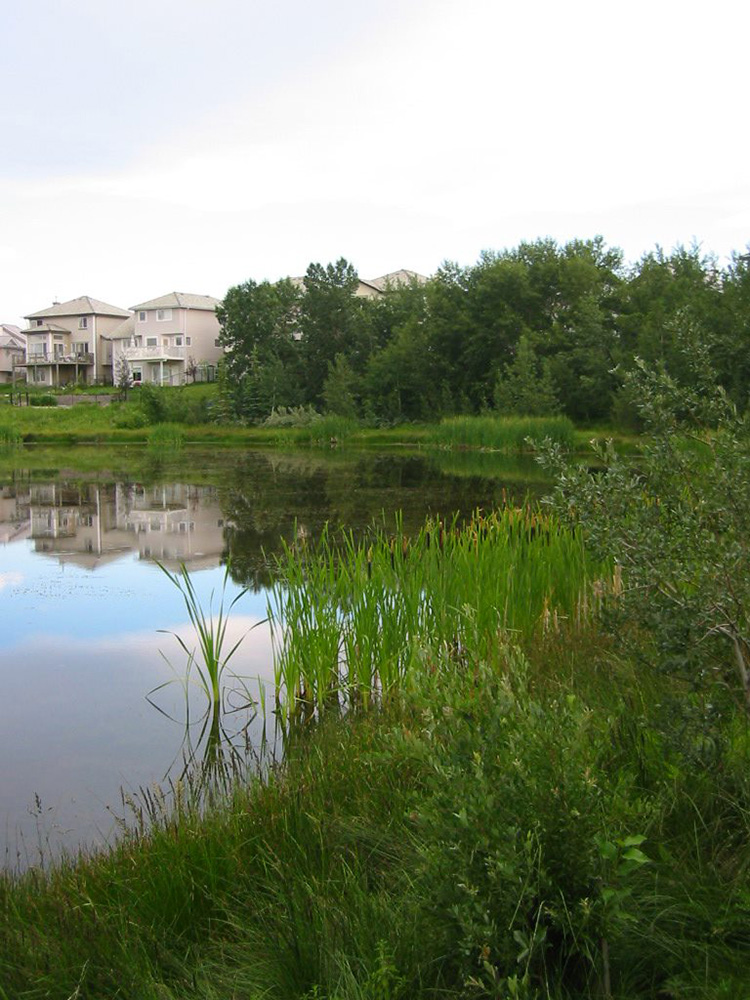
Outfalls
Outfalls are exit points by which storm water leaves the pipe system and enters our rivers or creeks. There are more than 800 outfalls located across Calgary.
In winter, ice can build up and force water from the rivers or creeks, and into the storm mains and surrounding communities. The outfall gates prevent this from happening. The gates are closed and monitored daily during winter months (November to April) because the ice pack on the rivers can change dramatically in a short period of time.
If the level of stormwater is significant, the gates are opened and the water is released. The gates are then immediately closed again. During summer months (May to October), the gates are fully open; however, they are monitored during this time and closed during high river flows to prevent water flowing back into the community.
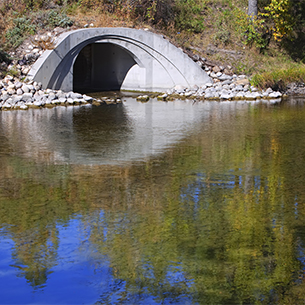
Stormwater management in the future
In the face of a changing climate that brings shifting precipitation patterns, earlier snowmelt and higher intensity storms, our approach to how we how we collect, store and release stormwater is evolving to keep new and older communities safe while protecting the natural environment and our rivers healthy.
Our updated Stormwater Management Strategy sets out a long-term direction over the next 20 years for new and innovative ways for managing stormwater runoff, improving water quality and decreasing pressure on the stormwater system. This strategy was approved by Council in September 2023.
The goals
-
Create safe and vibrant neighbourhoods
while striving for equitable service for all Calgarians.
-
Share responsibilities with Calgarians
and with surrounding regions for being good stewards of our communities and environment.
-
Promote and attain
healthy and resilient watersheds.
-
Provide infrastructure and services
that maximize value for Calgarians.
Working together
From the actions we take at our homes, to have City planners and developers plan for stormwater in new and established communities, everyone has a responsibility to support Calgary’s stormwater system.
This strategy will inform investments and decision-making as we continue to maintain, build and plan for a growing city and we will be collaborating with partners, developers, watershed experts and Calgarians on how best to deliver innovative and effective stormwater solutions across the city as we move forward.
Print guide for stormwater information
Stormwater bylaws
Our stormwater bylaws ensure proper water use and drainage from your home or business to The City’s stormwater system.

